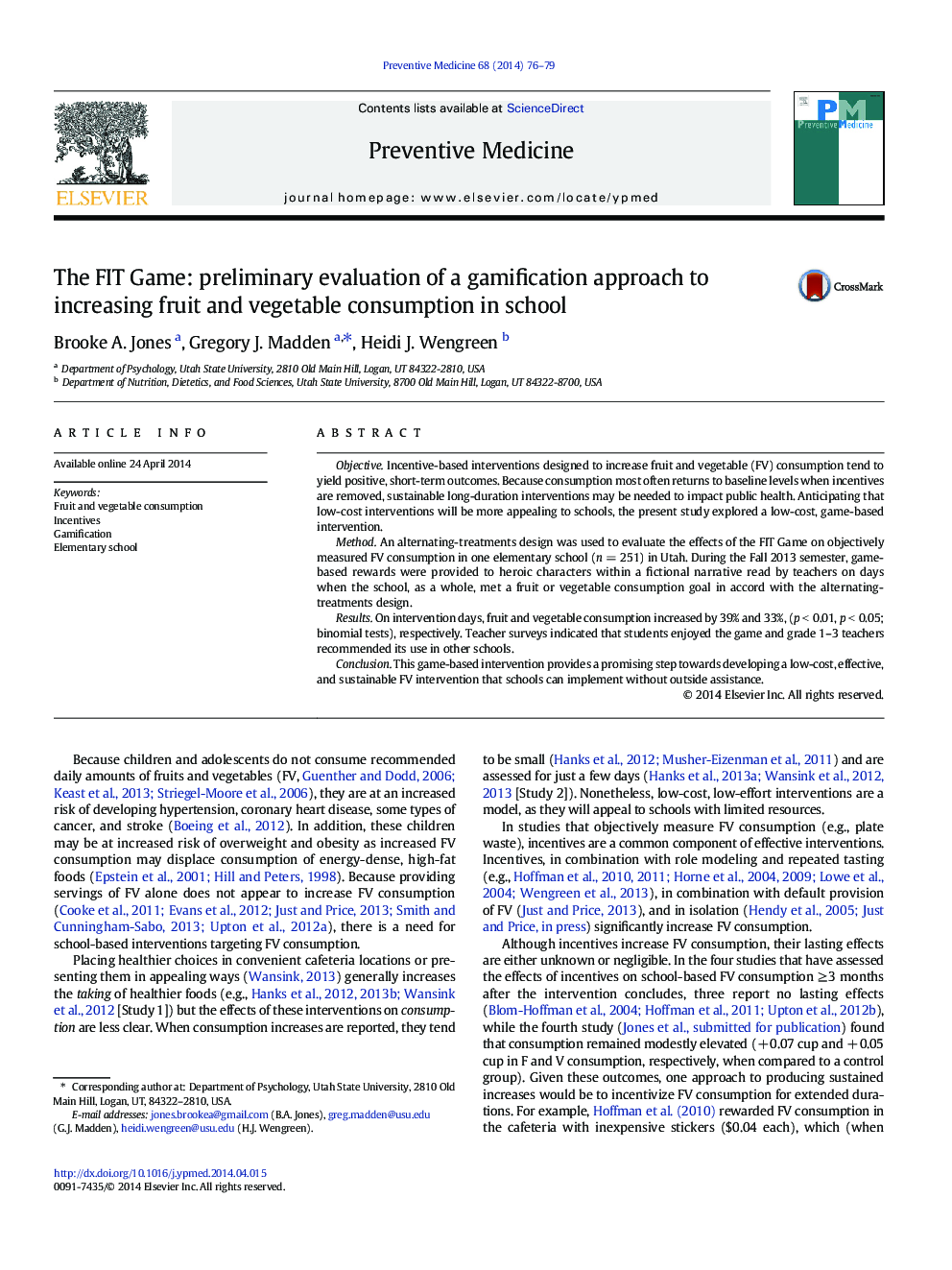| Article ID | Journal | Published Year | Pages | File Type |
|---|---|---|---|---|
| 3100474 | Preventive Medicine | 2014 | 4 Pages |
•This study evaluates a gamification intervention for increasing healthy eating in schools.•Real-world FV consumption was tied to virtual outcomes in an adventure game.•FV consumption was significantly elevated on game days.•FV consumption was not above baseline on control days.•This study supports a gamification approach to improving dietary decision-making.
ObjectiveIncentive-based interventions designed to increase fruit and vegetable (FV) consumption tend to yield positive, short-term outcomes. Because consumption most often returns to baseline levels when incentives are removed, sustainable long-duration interventions may be needed to impact public health. Anticipating that low-cost interventions will be more appealing to schools, the present study explored a low-cost, game-based intervention.MethodAn alternating-treatments design was used to evaluate the effects of the FIT Game on objectively measured FV consumption in one elementary school (n = 251) in Utah. During the Fall 2013 semester, game-based rewards were provided to heroic characters within a fictional narrative read by teachers on days when the school, as a whole, met a fruit or vegetable consumption goal in accord with the alternating-treatments design.ResultsOn intervention days, fruit and vegetable consumption increased by 39% and 33%, (p < 0.01, p < 0.05; binomial tests), respectively. Teacher surveys indicated that students enjoyed the game and grade 1–3 teachers recommended its use in other schools.ConclusionThis game-based intervention provides a promising step towards developing a low-cost, effective, and sustainable FV intervention that schools can implement without outside assistance.
